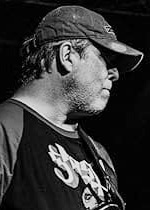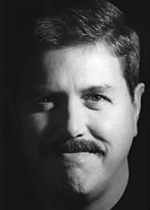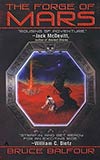Bruce Balfour
| Full Name: | Bruce Balfour |
| Born: | Tulsa, Oklahoma, USA |
| Occupation: | Writer |
| Nationality: | American |
| Links: |
|
Biography
Bruce Balfour was born in Tulsa, Oklahoma. In response, the American government created the space program.
Balfour moved to Orange County, California when he was ten. An avid science fiction reader, he started writing short fiction when he was fourteen. Hundreds of short stories later, his first professional sales occurred in 1982, when he was finally able to beat the editor of Twilight Zone into submission with a flurry of manuscripts.
After living around Los Angeles for ten years, Balfour felt obligated to study film production(and business)at UCLA. When he realized that there were only about eight people in California who were actually employed in film production, he made the natural switch and became a computer science major at the University of California, Santa Cruz. Desperate for people with artificial intelligence training, NASA hired Balfour at Ames Research Center. When they needed someone to push computer buttons on the Kuiper Airborne Observatory, a high-altitude research aircraft, NASA put Balfour on a team to capture infrared images of the Space Shuttle on reentry.
He enjoyed pushing buttons, and there were a few occupations he hadn't worked at yet, so Balfour became a computer game designer/producer/director. Involved in early and successful efforts to bring extensive stories and deeper characters into computer adventure games, several of Balfour's original and adapted PC games -- such as Neuromancer, Wasteland, Outpost, and The Dagger of Amon Ra -- became award-winning bestsellers.
While managing the development of his computer games, Balfour's first novel, Star Crusader, was published in 1995. A non-fiction book that explained the science behind his Outpost space simulation game - sometimes characterized as "Sim City in space" - was published in 1994. Adopted as a teaching tool by many high school science classes, the Outpost game and book remained in print until 2000.
Bitten by the entrepreneurial bug, Balfour put a few software companies together. Some exploded, but some did not. He then saw something shiny and his attention turned elsewhere.
Fearing that he might miss something during the dot-com boom, Balfour moved from the mountains near Yosemite and returned to the San Francisco Bay Area. As the director of product development for a large educational software company, he was a highly-paid cog in the machine of a multinational corporation, spending way too much time with high-tech executives, cultish software developers, and the possibilities of advanced Internet technologies, causing the darker themes of his next novels to ferment in his head. As you might expect, his natural response was to then get a degree in science journalism from the University of Massachusetts, Amherst.
Returning to the world of Big Science and Big Shiny Objects, from x-ray synchrotrons to supercomputers, Balfour took a job with the Lawrence Berkeley National Laboratory in Berkeley, California. Infected with an apparent desire to work for every federal lab in the country, Balfour then took a job with Sandia National Laboratories in Livermore, California, where he worked in Business Development creating domestic and international partnerships, among other things.
While at Sandia, Balfour developed and managed a technology business incubator known as i-GATE to support young companies engaged in advanced transportation and renewable energy product development. This plan worked out pretty well, and he liked the attention, so Balfour then got a master's degree in community and economic development from Penn State. Realizing that nobody would preface his name with "doctor" unless he earned yet one more degree, he is now working on his PhD at Penn State. He hopes to finish his dissertation before he's too old to remember his own name.
Balfour's novels, which explore such diverse subjects as artificial intelligence, nanotechnology, international politics, the future of the Internet, and the future of marketing, have been well-received. The Forge of Mars, published by Berkley/Ace in September of 2002, was a national bestseller. The 2003 sequel, The Digital Dead, examined realistic near-future technologies that simulate immortality and how they might be used by unscrupulous marketers and politicians. As they say, some people would die to live forever. Prometheus Road was published by Berkley/Ace in October of 2004.
His most recent novel is Burning Season, a modern-day techno-thriller, published in January 2012. He is now working on a historical novel set in ancient Egypt during the reign of Pharaoh Ramesses III, as well as another modern-day thriller.
If you can stand it, read more about these books and their backgrounds, see photo galleries, and get the full experience at www.brucebalfour.com.
Works in the WWEnd Database
Non Series Works |
|||||||||||||||||||
|
|
|
|
|
|||||||||||||||



















 Full Details
Full Details







